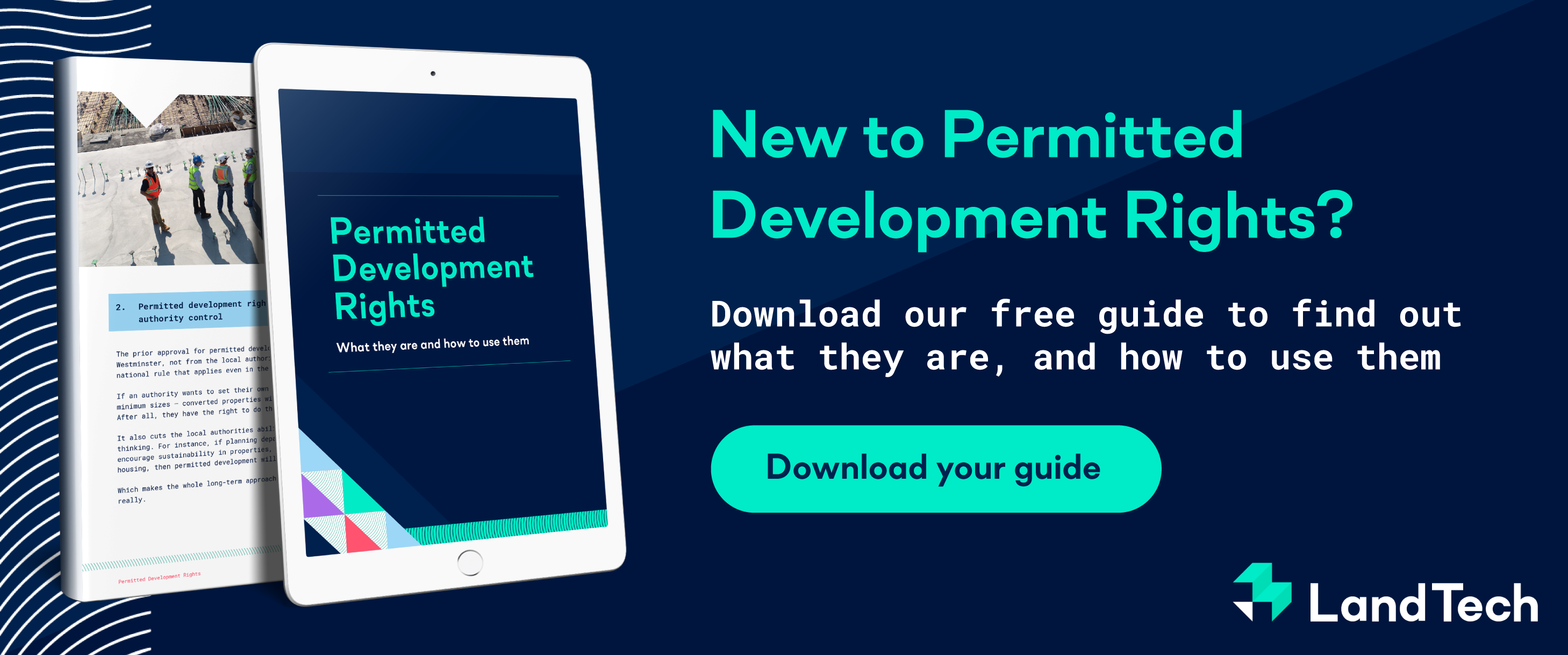For many developers, the path of least resistance for planning is to work with their local planning authority (LPA) when submitting an application – either to pre-empt any objections, or to overcome any tricky areas.
Sometimes these conversations fall apart, and a developer is left with no choice but to submit a planning appeal to the Planning Inspectorate.
The length of time these appeals take can vary. So we decided to look at what affects that time – and how to keep the process as quick as possible.
Specifically we looked into the Planning Inspectorate database of England and Wales between January 2016 and December 2020.
A quick overview of the planning appeals process
You can appeal a planning decision if either:
- You disagree with the decision of your planning application
- If the decision was not made within 8 weeks (or 13 weeks for major developments – 10 or more dwellings, or larger than 1000 square metres)
There are a few different types of appeals in England and Wales. The three most common ones are:
- Planning appeals – an appeal against the decision of your LPA regarding your planning application
- Householder appeals – the fast-track system for extensions or loft conversions etc.
- Enforcement notices – an appeal against an enforcement notice or other formal notice from the LPA
How long do they take on average?1
As the table above shows, a householder appeal is by far the quickest appeal type at 16 weeks. No surprise there as this is a fast-track process for relatively minor projects such as house extensions, compared to the more complex scope of larger developments.
Planning appeals come in next at 26 weeks, meaning on average you can expect an appeal to add half a year’s delay to your project. Finally, of the three most common appeals, enforcement notices take the longest – taking an average of 43 weeks to resolve.
The three ways you can appeal
You can submit your appeal in one of three ways:
- Written representation – the most (relatively) straightforward and common procedure
- Hearing – typically used when there’s public interest in your plans
- Inquiry – these are reserved for the complex cases
You can see that if you want to save time, keeping your appeal to a written representation will mean it takes an average of 24 weeks. If your appeal gathers public interest, expect it to take 40 weeks, nearly double that of a written representation.
But if your appeal is complex enough to require an inquiry, expect the process to take just over a year at 53 weeks.
The prevalence of Secretary of State Decisions
Most appeals are decided by the inspector assigned to the case. But, in certain cases (usually very large or complex developments), they make a report to the Secretary of State, who then decides the appeal.
Of the 55,873 appeals in the data, only 179 were transferred to the Secretary of State, or 0.3%.
These cases took longer to reach a decision. The average turnaround time of appeals that went to the Secretary of State was 65 weeks, versus the 25 weeks of other appeals – almost three times as long.
Planning appeals – the data behind the timelines
The Planning Inspectorate database is a big dataset. To make it as useful as possible for you, we included data on planning appeals in this analysis (which is the most relevant for many developers).
Then we decided to eliminate some outliers by focusing on written representations that didn’t go to the Secretary of State. That still left us with 93% of the planning appeals to analyse.
What were the turnaround times for planning appeals?
As the histogram shows, most appeals fall within 15 to 35 weeks.
But if you click right on the data story, you can see the extent of the worst-performing appeals. The fact that there are appeals above 220 weeks is quite worrying – that’s over four years added to a project’s timeline.
We wanted to see what the data showed if we separated planning appeals by the local authority they came from. We measured the average turnaround time of each local authority.
These local planning authorities offer relatively quick appeal turnarounds. You can expect your appeal, on average, to take 19-20 weeks.
On the other hand, appeals from these authorities take the longest. Planning appeals from Liverpool and Newcastle have a mean turnaround of 37 weeks – nearly 3 months longer than the average planning appeal length of 26 weeks.
Some surprising things that DON’T affect appeal duration
We analysed the 100 longest turnaround appeals from the above selection to see what impacted the appeal time. And, to be honest, some of the results surprised us.
For instance, we found that three big things did not affect turnaround time:
- The type of appeal – it didn’t matter what you were appealing (e.g. refused planning permission, refused prior approval etc.)
- The type of development – it didn’t matter what type of development was on your planning application (e.g. major retail and services, change of use etc.)
- The size of the development – it didn’t matter what the floor space of your development was
The main thing that affects appeal time? The local authority
The key factor that impacted how long an appeal took was simply which local authority the planning appeal originated from.
These ten local authorities were over-represented in the 100 longest appeals when compared to the rest of the data.
If you’re in one of these areas, you may need to factor in even longer delays on your projects should they go to appeal.
Summary – Take aways on what impacts planning appeal times
As a developer, submitting a planning appeal is often an option of last resort, and can drastically extend the timeline of your project.
We found that planning appeals, the most common type of appeal, have a mean turnaround time of 26 weeks.
Written representations, the most common type of procedure, have a mean turnaround time of 24 weeks, just under half the time of a public inquiry with a mean turnaround time of 53 weeks.
Planning appeals from Somerset West and Taunton had the shortest mean turnaround time of 19 weeks, while Liverpool City Council had the longest mean turnaround time of 37 weeks.
Finally, when looking for commonalities among the longest turnaround appeals we found that:
- It didn’t matter what the nature of your appeal was
- Nor did the type of development
- Nor did the floor space of your development
None of these had an impact on how long your appeal took.
What did affect it? Your local planning authority.
Wandsworth and Westminster were the most over-represented in our cohort of longest turnaround appeals.
The planning appeal process can be arduous and can significantly extend your project timeline. But if you're aware of these risks upfront, you can take steps to avoid your timetable (and budget) being too badly impacted.
But there's another way. You could look to avoid the planning process as much as possible while still building the homes the country desperately needs.
Permitted Development offers a host of opportunities to developers. Check out our Permitted Development Rights guide to learn more.
1 Planning turnaround time was measured as the date the decision was made, minus the date the appeal was submitted. A small note, but the appeal database gives us this information, while the appeal itself only shows the date the inspector started looking at the appeal.
Why? Well as a developer what matters for you when estimating project timelines isn’t how long it takes when the inspectorate starts looking at your case, but how long it takes from submission to decision.

